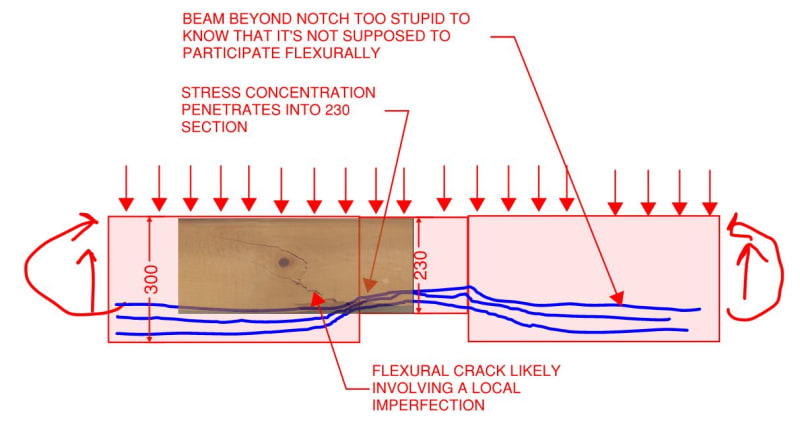Settingsun
Structural
- Aug 25, 2013
- 1,513
Using my local code, a sharp notch on the tension side of a sawn timber beam reduces the bending capacity to about 10% of the un-notched capacity, varying depending on the details of the notch and type of timber. The notch is where a post was previously located but has been move to one side leaving the notch in the span.
Say the beam is 300mm deep notched to 230mm. If I had an un-notched 230mm beam, capacity is 59% of the 300mm beam. This would be adequate due to reduced loading and favourable geometry, but 10% from notch calcs is not.
Is a notched beam really that much weaker than an un-notched beam of same depth, ie the extra timber is bad? How do they fail? I picture splitting along the grain so the notched beam will turn itself into the 230mm beam under load (this wouldn't bea danger as access is restricted), but I guess it could also fracture at an upward angle through the grain.
Say the beam is 300mm deep notched to 230mm. If I had an un-notched 230mm beam, capacity is 59% of the 300mm beam. This would be adequate due to reduced loading and favourable geometry, but 10% from notch calcs is not.
Is a notched beam really that much weaker than an un-notched beam of same depth, ie the extra timber is bad? How do they fail? I picture splitting along the grain so the notched beam will turn itself into the 230mm beam under load (this wouldn't bea danger as access is restricted), but I guess it could also fracture at an upward angle through the grain.

